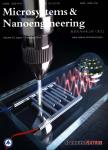Acoustofluidic separation of prolate and spherical micro-objects
作者机构:Department of Mechanical EngineeringChonnam National University77 Yongbong-roBuk-guGwangju 61186Republic of Korea Department of Polymer EngineeringThe University of Suwon17 Wauan-gilBongdam-eupHwaseongGyeonggi 18323Republic of Korea
出 版 物:《Microsystems & Nanoengineering》 (微系统与纳米工程(英文))
年 卷 期:2024年第10卷第1期
页 面:217-230页
核心收录:
学科分类:07[理学] 070305[理学-高分子化学与物理] 0703[理学-化学] 0702[理学-物理学]
基 金:the National Research Foundation of Korea(NRF)grants funded by the Korea government(MSIT)(Nos.2020R1A5A8018367 and RS2023-00210891) The microfluidic devices were fabricated by using a mask aligner(MDA-400S,MIDAS) the Energy Convergence Core Facility at Chonnam National University.S.J.L.acknowledges the support by the National Research Foundation of Korea(NRF-2018R1A5A1024127).
主 题:separation spherical rotating
摘 要:Most microfluidic separation techniques rely largely on object size as a separation marker.The ability to separate micro-objects based on their shape is crucial in various biomedical and chemical assays.Here,we develop an ondemand,label-free acoustofluidic method to separate prolate ellipsoids from spherical microparticles based on traveling surface acoustic wave-induced acoustic radiation force and torque.The freely rotating non-spherical microobjects were aligned under the progressive acoustic field by the counterrotating radiation torque,and the major axis of the prolate ellipsoids was parallel to the progressive wave propagation.The specific alignment of the ellipsoidal particles resulted in a reduction in the cross-sectional area perpendicular to the wave propagation.As a consequence,the acoustic backscattering decreased,resulting in a decreased magnitude of the radiation force.Through the variation in radiation force,which depended on the micro-object morphology enabled the acoustofluidic shape-based separation.We conducted numerical simulations for the wave scattering of spherical and prolate objects to elucidate the working mechanism underlying the proposed method.A series of experiments with polystyrene microspheres,prolate ellipsoids,and peanut-shaped microparticles were performed for validation.Through quantitative analysis of the separation efficiency,we confirmed the high purity and high recovery rate of the proposed acoustofluidic shapebased separation of micro-objects.As a bioparticle,we utilize Thalassiosira eccentrica to perform shape-based separation,as the species has a variety of potential applications in drug delivery,biosensing,nanofabrication,bioencapsulation and immunoisolation.



